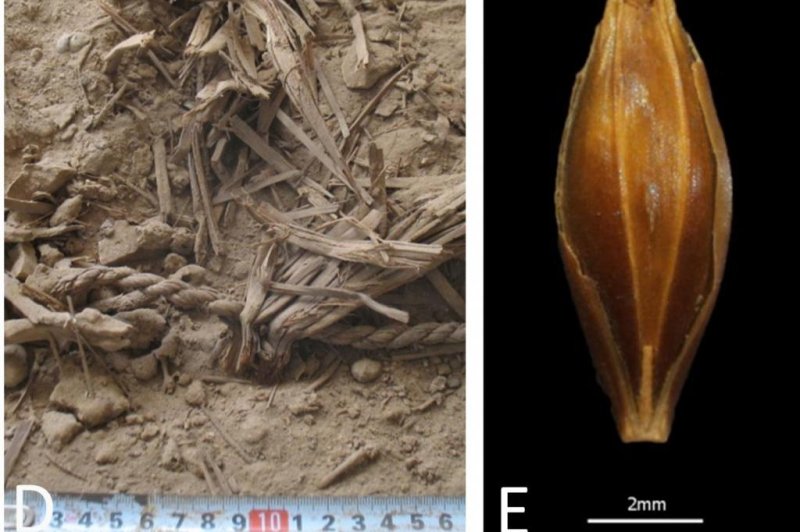The newly sequenced barley remains were recovered from Yoram Cave in Israel. Photo by Uri Davidovich/Bar-Ilan University
RAMAT GAN, Israel, July 18 (UPI) -- Ancient barley recently became the oldest plant to have its genome sequenced.
Scientists recovered 6,000-year-old barley seeds from a cave in Israel. They split the grains, using half for radiocarbon dating and the other half for genome sequencing.
The Chalcolithic barley reveal the grain as it was prior to its use in the bronze-making process.
"These archaeological remains provided a unique opportunity for us to finally sequence a Chalcolithic plant genome," Ehud Weiss, an archaeobotanist at Bar-Ilan University in Israel, said in a news release. "The genetic material has been well-preserved for several millennia due to the extreme dryness of the region."
Wheat and barley were first cultivated 10,000 years ago in the Fertile Crescent, the ancient cradle of civilization that included the people of Mesopotamia and the Levant -- a region encompassing modern Iraq, Syria, Lebanon, Jordan, Israel, Palestine and Egypt.
Until now, researchers have plotted the evolution of grains from these early beginnings to today by studying changes in morphology. Genetic data offers a more precise way to study the history of grain cultivation and early farmers.
"For us, ancient DNA works like a time capsule that allows us to travel back in history and look into the domestication of crop plants at distinct time points in the past," said Johannes Krause, director of the archaeogenetics department at the Max Planck Institute for the Science of Human History in Germany.
The results of the genomic analysis reveal a sharp contrast between the ancient grains and wild barley found in the Middle East today. The analysis also revealed strong similarities between ancient and modern barley strains.
"This similarity is an amazing finding considering to what extent the climate, but also the local flora and fauna, as well as the agricultural methods, have changed over this long period of time," said Martin Mascher, a scientist with the Leibniz Institute of Plant Genetics and Crop Plant Research.
Mascher is the lead author of a new paper detailing the ancient barley genome. The paper was published this week in the journal Nature Genetics.
As new tools for genomic analysis emerge and old ones are improved, scientists in the fields of archaeology, archaeobotany and genetics are finding novel ways to study relationships between people and the natural world.
"This is just the beginning of a new and exciting line of research," said Verena Schuenemann, a researcher from Tuebingen University. "DNA-analysis of archaeological remains of prehistoric plants will provide us with novel insights into the origin, domestication and spread of crop plants."















